9 Best Drones for Roof Inspections (2025 Drone Guide)
By Jack Gray, Roof Online Editor • Last updated January 16, 2025
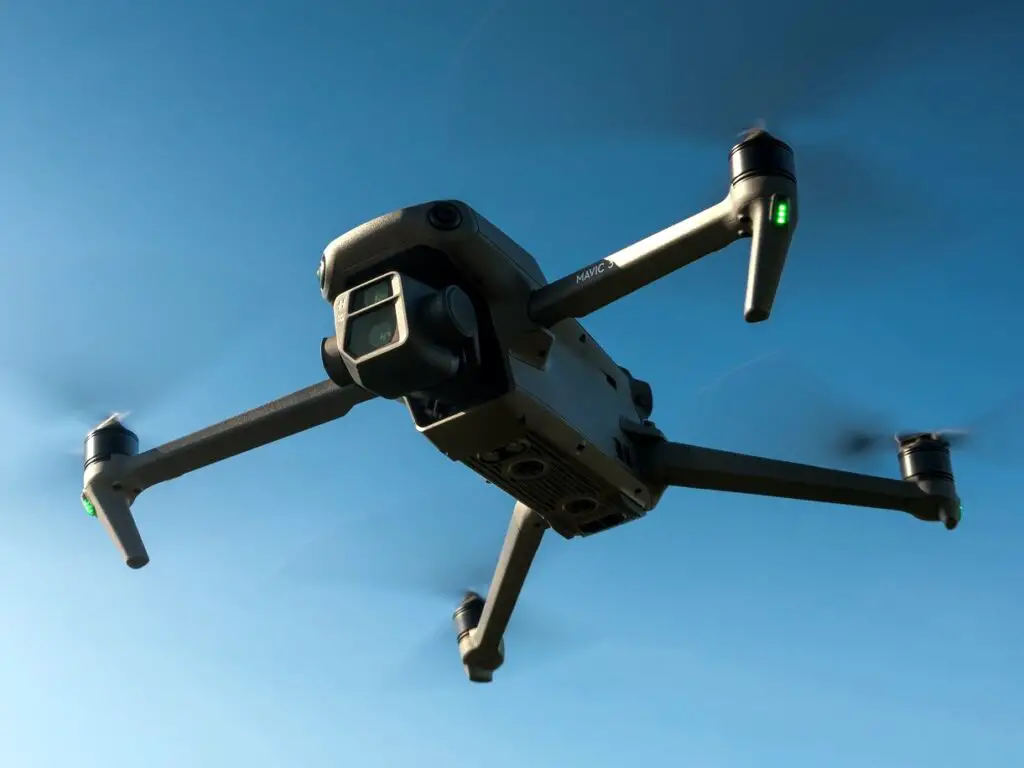
Table of Contents
- Introduction
- About Drone Roof Inspections
- What to Look for in a Roof Inspection Drone
- List of the Best Drones for Roof Inspections
- DJI Mavic 3 Pro • Best Drone for Professional Roof Inspections
- Autel Robotics EVO 2 Pro V3 • Best Drone for Professional Roof Inspections
- DJI Phantom 4 Pro V2.0 • Best Drone for Roof Mapping & Automated Roof Surveys
- DJI Air 3 • Best Drone for Roof Estimating
- Parrot Anafi Work • Best Drone for 3D Modelling Roofs
- Parrot Anafi Thermal Drone • Best Affordable Thermal Drone
- DJI Mini 2 • Best Lightweight Drone for Roof Inspections
- Update: DJI Mini 4 Pro • Best Lightweight Drone for Roof Inspections
- Contixo F35 • Best Cheap Drone for Roof Inspections
- More Drone Resources
Introduction
We’re assuming that visitors to this page are roofing contractors, property managers, or roof consultants with a professional interest in finding the best drone to use for inspecting roofs.
Home inspectors and insurance adjusters should also find this list of the best inspection drones very useful. The best drones for roof inspections are also the best drones for home inspections generally.
We’re professional building envelope consultants as well as drone owners. In addition to our own experience with drones and roof inspections, we research and keep up-to-date with the latest inspection drones to identify which new drones we would buy ourselves (and will, when it’s time for an upgrade).
We wrote this article specifically to help you find the best drone for professional roof inspections, roof estimating, and the production of high-quality roof reports that will satisfy and impress your clients.
Our company has over 50 years of experience performing roof inspections, so we know exactly how a drone can make our jobs easier, and what features the best drones should have to provide the most value to a roof inspector.
Please be careful of the drone websites that pop up in the search results when you search the internet for a roof inspection drone recommendation.
We’ve noticed that a lot of these sites were set up just to make money off of drone sales by unscrupulous people who have absolutely no knowledge of roof inspections or the needs of roof inspectors.
About Drone Roof Inspections
Getting Your Drone License
The use of drones by civilians (like all civil aviation) falls under the authority of the Federal Aviation Administration (the FAA), and they take drones seriously.
They provide a ton of useful information in the drone section of the FAA website to help you navigate your way into being a happy, law-abiding drone pilot.
If you are going to be using a drone for a commercial purpose in the United States, you must go through the FAA process for becoming a drone pilot. This goes for everyone, even residential landlords and commercial property owners who are looking at the roofs on their own buildings.
This process includes registering your drone and getting an airworthiness certificate for your drone, and you must obtain your Remote Pilot Certificate from the FAA. It’s not that difficult and people do it all the time!
For help passing your Part 107 test (which is required in order to get your Remote Pilot Certificate), there are very good study guides available.
If you are simply flying a drone around for fun and maybe looking at your own roof on your own house (for fun), you don’t need a license. You don’t need one of the best drones, either!
This also means that you can buy the drone you’ll be using for work and practice flying it (for fun!) while you get your certificate.
See Recreational Flyers & Modeler Community-Based Organizations at the FAA website for more information.
Why Use a Drone to Inspect a Roof?
There are two main reasons to use a drone when performing roof inspections: drones reduce or eliminate the risk of injury, and they can save you an incredible amount of time.
They can also access and photograph hard-to-reach areas of a roof that would be time-consuming and expensive for you to get to yourself.
Think tower roofs. Think of the times you’ve had to set up a ladder, climb up to the roof, and then haul up another ladder in order to reach a higher roof section on the building.
By saving time, drones save you money. By saving a lot of time, they save you a lot of money.
When you’re looking at drone prices (which can be steep), it’s really just a matter of how long it will take for the drone to save you enough time to cover the expense.
The best drones will save you a lot more time than a mediocre drone will. The best drones can fly longer, handle higher wind speeds, and are less likely to crash and break. The best drones also take much better pictures.
According to a 2018 survey of general contractors, about 57% said they used drones. That number is still going up, and for good reason.
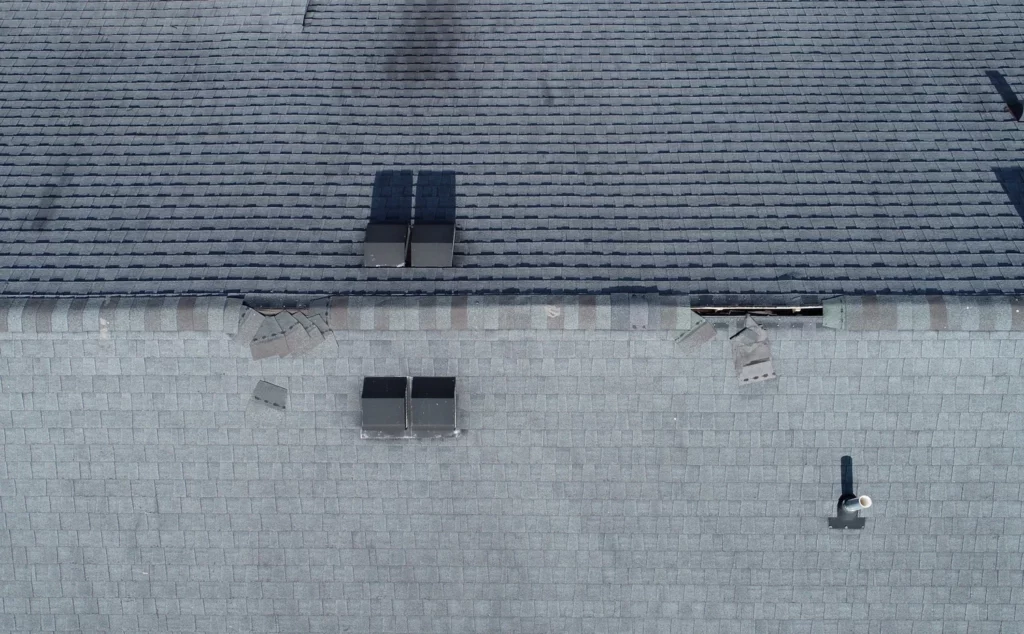
How Can a Drone Help with a Roof Inspection?
First and foremost, a drone takes pictures, and the pictures taken by a drone can be used for several roof-related purposes.
The best drones are compatible with specialized drone inspection software applications that make it easy to generate a variety of roof reports. The best drones can now be used to produce detailed 3-D models of roofs.
Watch this short video about drone roof inspections. The video is from Pix4D, a leading photogrammetry software company. The video very quickly runs through a drone roof inspection from when you send up the drone to when you generate your roof report.
Remember that only higher-end drones will work with software like this. “Toy” drones won’t.
Roofing estimators can use drones to identify existing roofing, note some major issues, identify and count rooftop units, take roof measurements, determine roof slopes, and produce full photographic roof plans.
Drones can be used for rapid response storm damage inspections – finding broken skylights, damaged or missing shingles, missing parapet wall coping, and other critical issues.
If you have a drone, you can use it to identify obvious maintenance items like clogged gutters. Drones can identify bird problems, wind damage, ponding water, clogged drains or scuppers, dangerous snow loads, and other visually-identifiable issues.
Drones and Thermal Roof Scans
Thermal cameras mounted on drones are changing the way infrared roof scans are performed and lowering the cost of these inspections.
The best thermal drones can be sent up after sunset to take pictures of the roof in a pre-programmed grid. A thermal map of the roof can be automatically generated from these images, revealing wet roof insulation and gaps in the thermal envelope.
Performing infrared (IR) thermography (thermal imaging) roof inspections can be an extremely profitable stand-alone small business. A thermal drone can make it even more profitable by decreasing the time take it takes to survey the roof.
It’s also a lot safer to use an infrared camera drone than it is to walk around on a roof in the dark with a hand-held thermal camera.
You do need special authorization to use your drone at night, but waivers aren’t that hard to get. See this FAA web page.
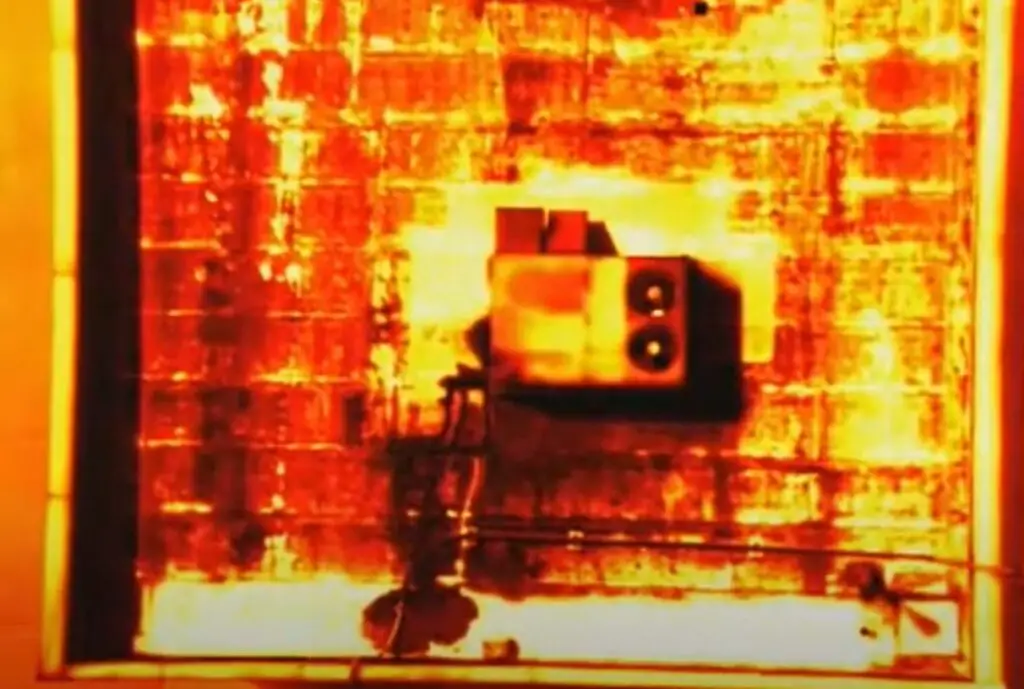
Practical Limitations of Drone Roof Inspections
A drone inspection alone won’t be the best thing for professional roof maintenance inspections or thorough roof condition assessments. There are too many items that require you to actually be on the roof to investigate.
Even the best drones can’t check sealant adhesion, probe membrane seams, or spot most roof blisters. But a drone can certainly be an incredibly useful part of your inspection toolkit.
Restricted Airspace for Drones
You cannot use a drone at all in some areas, so if the roof you want to inspect is in one of these areas, you’re out of luck. The only way around this is by receiving a special waiver from the FAA.
Many drones will give you a warning and then start to shut down if you fly the drone into a restricted zone.
This is called “geofencing”. Geofencing uses your drone’s GPS system and internal operating system software to automatically disable your drone when it detects that the drone is in one of these areas. You normally can’t turn this feature off.
Many of the best drone manufacturers use geofencing, and it can be an issue if you need to inspect a roof in a no-fly zone. Even if you’ve received permission to fly in a no-fly zone, there are a lot of anecdotes from annoyed drone users about having a hard time getting the drone manufacturer to turn off the geofencing.
But not every drone manufacturer includes geofencing on all their drones.
In January 2025, DJI, which make the majority of commercial drones used in the world, announced a new policy removing enforcement of its “No Fly Zone” geofences in restricted areas. We’ll see how that plays out.
No-fly areas for drones include national security installations, airports, prisons, and power plants, as well as the surrounding areas. The sizes of these surrounding areas can have varying diameters and can be affected by state or local regulations.
If you’d like to look up an address to check whether you can use your drone there, the drone manufacturer DJI provides a searchable map on their website that identifies restricted areas.
You can see and search the map on their web page Fly Safe Geo Zone Map. The map takes a minute or two to load the restricted areas, so be patient.
The FAA also provides a free smartphone app that pretty much covers the same thing. They say it’s for recreational users, but most drone no-fly zones are the same whether you have a registered drone or not.
“Recreational users who only fly their drone for fun, now have an improved app – B4UFLY – to help show where they can and cannot fly with interactive maps.” Read more about the FAA phone app here.
What to Look for in a Roof Inspection Drone
Battery Life/Flight Time: The best drones can fly for at least 25 minutes when fully charged. This should be long enough to map a 30,000 square foot roof with the desired level of image detail. Always keep a spare battery or two on hand so you can fly longer if you need to.
Camera Quality: The entire point of buying the best camera drone is the pictures it will produce for you. A really good camera will make up a big chunk of the price of the drone. But you don’t want a cheap camera that takes low-grade pictures.
A higher quality camera allows you to complete your inspection faster with a lower risk of damaging the drone. You can fly at a safer, higher altitude, and take useful pictures that cover more of the roof.
The best drones can produce very high-quality images so you can zoom in or blow up the images to see and highlight important details. You don’t want pictures that lose quality and turn blurry when you try to make them larger.
Flight Stability: The best drones can be used even if it’s a little windy. If you want your drone to take useful pictures even if it’s not a completely calm day, you’ll need a high quality flight control system.
For high quality images the drone needs to be able to keep the camera steady while hovering regardless of the wind. Also see “obstacle avoidance” below.
Gimbal: Integrated gimbal is a feature that keeps the camera steady while the drone is in motion, whether the motion is because of the wind or because you’re moving it around.
This allows good quality pictures without the drone needing to hover perfectly still. The best drones will take high-quality pictures even while fighting the wind.
GPS System: For automatic, programmable flights, you’ll need a drone with a good integrated GPS. GPS also allows the drone to automatically return to you after it’s done and improves the drone’s ability to hover in one place. It’s also necessary for producing software-generated roof plans.
Obstacle Avoidance: This is a big deal. The best drones will include a feature called “obstacle avoidance”, which automatically keeps the drone from crashing into things.
It is very easy to crash a drone, and very easy to break your drone if you do crash it. You want your drone to have automatic obstacle avoidance to prevent serious down-time.
There are different levels of obstacle avoidance, depending on how many directions the drone has sensors for. The absolute best drones will have 6-way obstacle avoidance, while most cheap drones will have no automatic obstacle avoidance at all.
Range: We assume that you’ll be flying your drone over a nearby roof and not using it to take video of a bicycle race, so maximum flight range will not be a big consideration.
While some of the overall best drones have amazing ranges, all of the drones on our list will have more than enough range for roof inspection.
Ruggedness: The best drone for roofers or anyone else who inspects roofs won’t be too fragile. Your drone is a tool, you’ll be using it regularly out in the field, and you don’t want something that will fall apart if not handled with the utmost sensitivity.
Software Options: The best drones can use specially-designed inspection software. There are plenty of third-party software applications available out there which can automate your roof inspections from take-off to touch-down, but you’ll need a drone that’s compatible with third-party software.
There are a lot of excellent camera drones out there, made by a lot of good companies. But there isn’t any good inspection software available to use with a lot of them. You want your inspection drone to help make your job as simple as possible!
We’ve tried to only include drones that either come with good drone inspection apps from the manufacturer or that are compatible with third-party inspection software. Drones that have good third-party inspection software available for them.
Obviously, you shouldn’t expect too much in the way of inspection software from the low-end drones on our list.
Speed: This isn’t an important criterion for what makes the best roof inspection drone. You aren’t looking for a racing drone.
Thermal Imaging: The best drones can be outfitted with a thermal camera. If you’re planning on performing thermal scans with your drone, you’ll want a drone with a thermal camera option.
Note that many drones that don’t come equipped for thermal imaging from the manufacturer can be modified afterwards. There are businesses that specialize in after-market drone modification. Installing thermal cameras is one of the main things they do.
Video Quality: Although most of these drones are video-equipped, video quality is not a key consideration for roof inspections.
The most expensive consumer drones are typically called “professional” drones. These are considered the best drones overall, and they are geared toward filmmakers. The increased prices reflect everything that a drone needs to produce that professional-grade video.
There’s no reason for you to pay for that.
Weight: Drone weight is important due to FAA drone regulations. From the FAA: “All drones must be registered, except those that weigh 0.55 pounds or less (less than 250 grams) and are flown exclusively under the Exception for Recreational Flyers”. Learn more here.
List of the Best Drones for Roof Inspections
Note: The drone prices shown are not actual prices from an actual retailer. They are intended to give you a rough idea of how much a particular drone will cost. Prices may change over time and will vary according to which accessories come with the drone package.
DJI Mavic 3 Pro • Best Drone for Professional Roof Inspections
Price Range: $2,900+
Check DJI Mavic 3 Pro price on Amazon
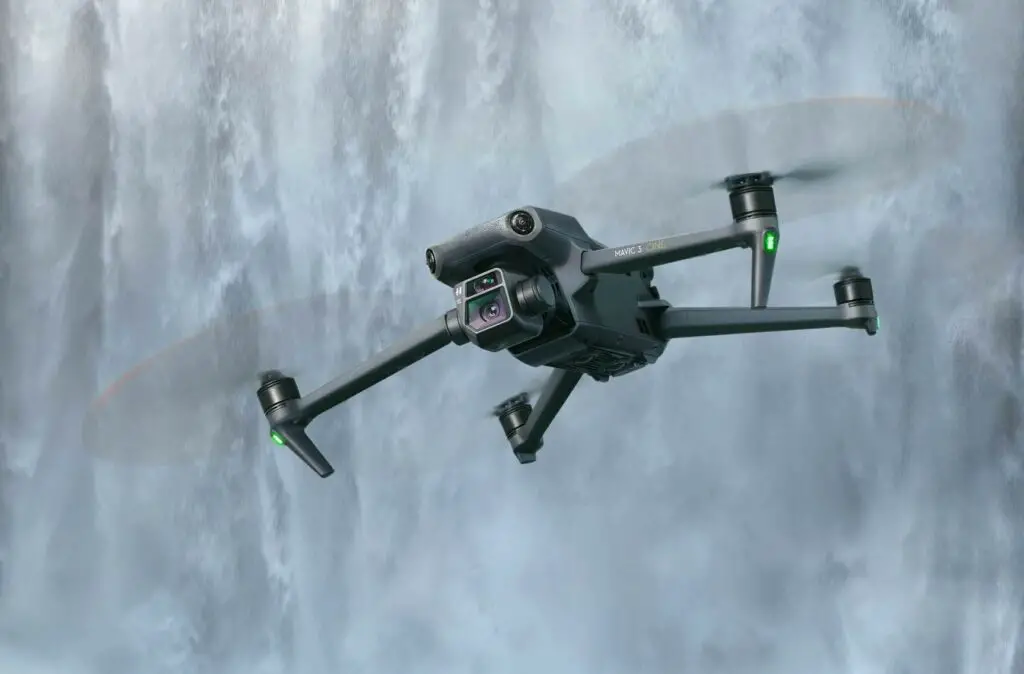
Why it’s one of the best drones for roof inspections:
Released in May 2023. The DJI Mavic 3 Pro is the flagship enterprise drone from DJI, the world’s largest producer of consumer drones. It has pretty much everything you’ll need in a roof inspection drone, and it folds up for maximum portability. Top recommendation for thorough, manually-controlled inspections.
The Mavic 3 Pro is an April 2023 upgrade to the Mavic 3, which replaced the Mavic 2 Pro in DJI’s Mavic line of drones in November of 2021. A Mavic 2 Pro inspection drone was the grand prize at the big raffle toward the end of the 2020 International Roofing Expo in Dallas, Texas, which tells you what the roofing industry thinks of the Mavic line of drones.
The Mavic 2 Pro is also an excellent drone for roof inspections, and is currently well-supported by a large range of third-party software packages for automated mission control and report generation.
- Camera: The DJI Mavic 3 Pro comes with three cameras. The Main Hasselblad Camera has a 4/3 CMOS sensor, 24mm format equivalent, f/2.8-f/11, 20 MP. This 4K drone camera supports shooting RAW photos with a dynamic range of up to 12.8 stops; The Medium Tele Camera has a 1/1.3-inch CMOS, 70mm equivalent, 3x Optical Zoom, f/2.8, 48 MP; the 1/2-inch CMOS Tele Camera has 166mm equivalent, 7x Optical Zoom, 28x Hybrid Zoom, f/3.4, 12 MP.
- Flight Control: Comes with integrated GPS, omnidirectional (6 directions) automatic obstacle avoidance, and automatic return-to-home function.
- Flight Time: Up to 46 minutes.
- Roof Inspection Software: Because of DJI’s massive market share, more third-party drone software is produced for DJI drones than any other. There are a variety of specialized roof inspection applications available. The DJI Mavic 3 was released in November 2021 and third-party software companies are still updating their products to be Mavic 3 compatible. Check for compatibility before purchasing any software. DJI also produces their own inspection software for the Mavic 3.
- Thermal Camera: A thermal camera option is available for this drone.
- Weight: 895 g
See the DJI Mavic 3 Pro on Amazon
Autel Robotics EVO 2 Pro V3 • Best Drone for Professional Roof Inspections
Price Range: $2,000+
Check Autel EVO 2 Pro price on Amazon
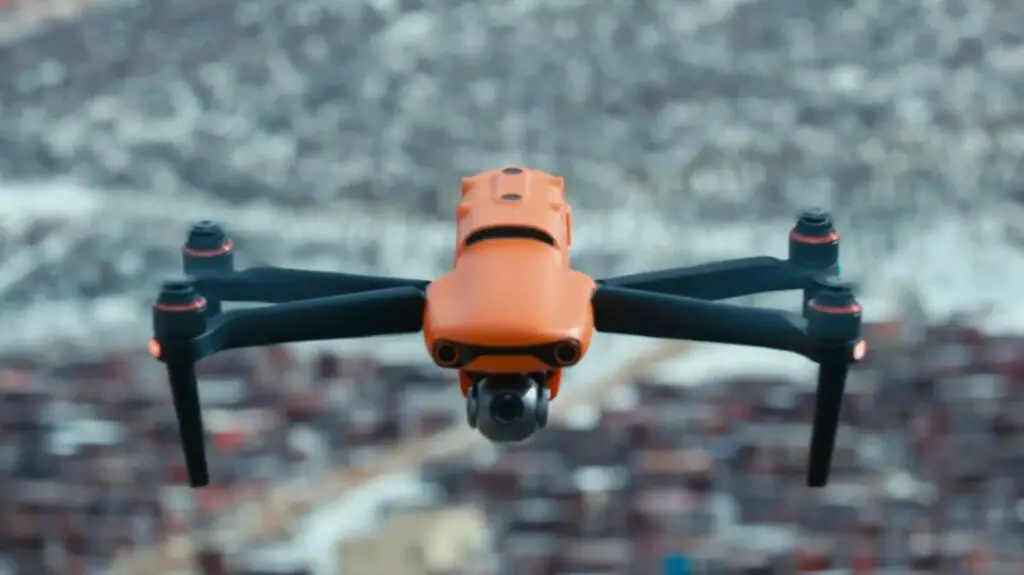
Why it’s one of the best drones for roof inspections:
Released in October 2022. The Autel EVO 2 Pro is Autel Robotics’ answer to the Mavic 3. Autel is an American company with a great reputation and remarkably devoted customers who argue that Autel makes better drones than DJI.
Autel doesn’t use geofencing to automatically disable its drones in no-fly zones.
This means you don’t have to deal with the hassle of letting your drone manufacturer know when you have permission to fly and depend on them to adjust your drone’s restrictions. You can also operate the EVO 2 Pro without having to create an account with Autel, unlike with DJI.
The EVO 2 Pro is a heavy drone with great wind resistance, so a windy day won’t always mean you can’t do your inspection. Downtime due to wind is always a concern, even with the best drones. And despite the weight, it can still fly for 40 minutes on a fresh battery.
The camera is excellent, capturing superior images in low-light conditions.
- Camera: 20 megapixel images, 1″ CMOS camera. with up to 8x zoom.
- Flight Control: Comes with integrated GPS, omnidirectional (6 directions) automatic obstacle avoidance, and automatic return-to-home function.
- Flight Time: Up to 40 minutes.
- Roof Inspection Software: The Autel EVO 2 Pro comes from the manufacturer ready to perform both manually-operated and automated, intelligent flight mode inspection missions. Although some of the better-known third-party software does not currently support Autel drones, there are plenty of options available for producing inspection reports using the images and location data captured by the EVO 2 Pro.
- Thermal Camera: A thermal camera option is not available for this drone, although Autel makes one of the absolute best drones for thermal inspections.
- Weight: 1,174 g
See the Autel EVO 2 Pro on Amazon
DJI Phantom 4 Pro V2.0 • Best Drone for Roof Mapping & Automated Roof Surveys
Price Range: $2,500+
Check DJI Phantom 4 Pro V2.0 price on Amazon
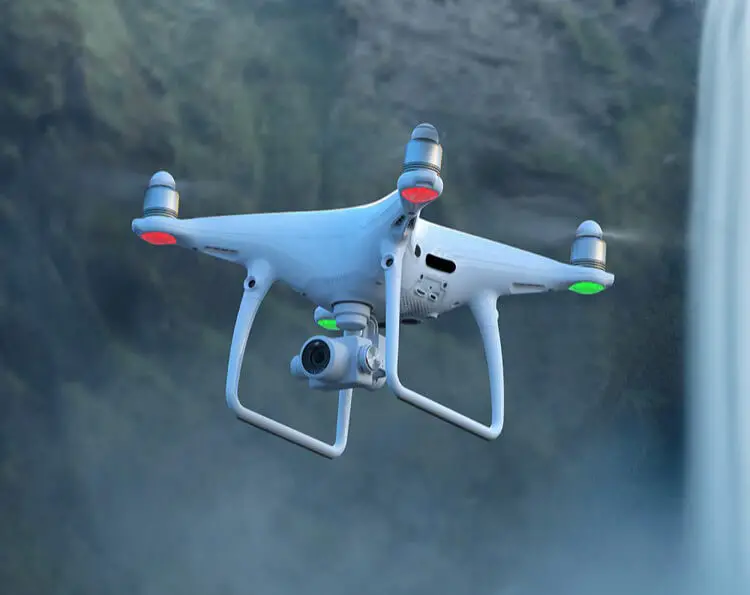
Why it’s one of the best drones for roof inspections:
Released in January 2020. If you’re looking for the best drone for the production of detailed, high-quality, full-roof maps and graphics, the DJI Phantom 4 Pro V2.0 is the way to go.
Auto-generate roof plans with accurate measurements. Perform pre-programmed, automated inspection and mapping flights. Manually control the drone for close-up shots of roof defects.
The Phantom 4 Pro V2.0 is widely considered the best mapping drone in its price range.
This drone is also supported by a very large assortment of specialized third-party software platforms, allowing you to perform roof-specific inspection missions programmed by experts.
Generate customized roof inspection reports for large commercial roofs. Create 3-D computer models of your clients’ roofs. See here for an example of third party software with roof-specific applications.
- Camera: 20 megapixel images. 4K/60fps. 1-inch CMOS sensor and a mechanical shutter, eliminating rolling shutter distortion. An advanced sensor and impressive processing capture every detail and provide the image data needed for advanced post-production.
- Flight Control: Comes with integrated GPS, 5-direction automatic obstacle avoidance, and automatic return-to-home function.
- Flight Time: Up to 30 minutes.
- Roof Inspection Software: As one of the best and most-recommended inspection and mapping drones, the Phantom 4 Pro V2.0 is supported by one of the largest selections of third-party software.
- Thermal Camera: A thermal camera option is not available for this drone from the manufacturer, but a thermal camera can be installed later.
- Weight: 1375 g
See the DJI Phantom 4 Pro V2.0 on Amazon
DJI Air 3 • Best Drone for Roof Estimating
Price Range: $1,100+
Check DJI Air 3 price on Amazon
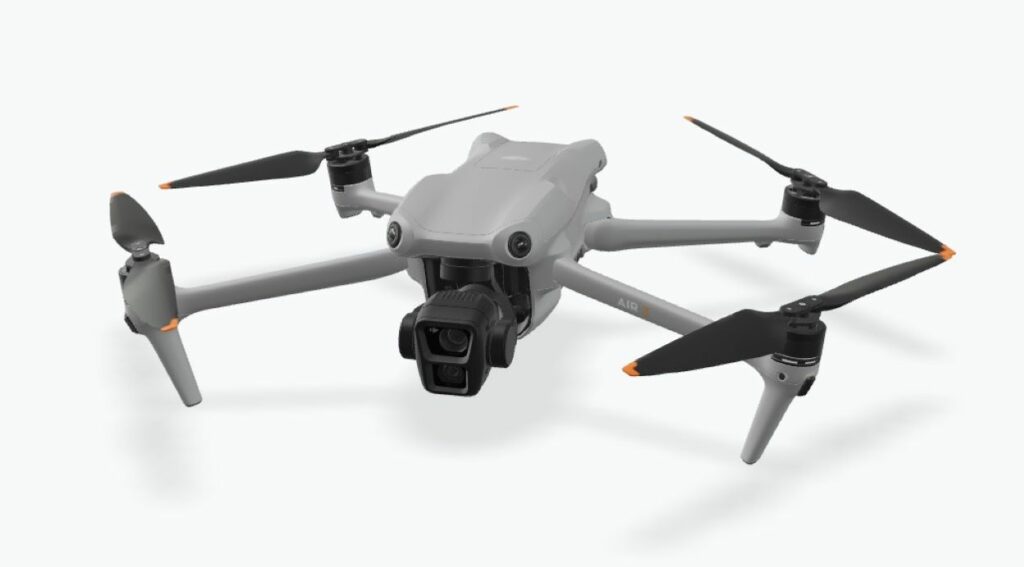
Why it’s one of the best drones for roof inspections:
Released in July 2023. Significantly cheaper than the Mavic 3, the Air 3 can do a lot of what the Mavic 3 can do, just not quite as well. Another excellent drone from DJI. Folds up for storage and portability. The Air 3 is the best drone in its price range.
The Air 3 has significant improvements over its predecessor, the Mavic Air 2S, particularly in its upgraded camera(s) and an almost 50% increase in flight time. The new cameras lead to incredibly detailed pictures which allow you to blow up your pictures later in the office for a great look at specific roof details and defects. It also takes good pictures in low-light situations with night-mode, which is helpful when taking pictures of roof areas that are in the shadows, particularly when it’s late in the day.
It also has much improved functions for automated flight paths and automated image capture. (The DJI Air 2S is still a very solid choice for a roof inspection drone and runs about $300 cheaper.)
- Camera: 48 megapixel images. The cameras consist of a 1/1.3-inch CMOS Wide-Angle Camera and a 1/1.3-inch CMOS Medium Tele Camera for zooming. Capable of combining images to create panoramic views. 3-axis gimbal.
- Flight Control: Comes with integrated GPS, omnidirectional automatic obstacle avoidance, and advanced automatic return-to-home function. Easy for beginners to control without worrying about crashing.
- Flight Time: Up to 46 minutes.
- Roof Inspection Software: Again, because DJI produces around two-thirds of the consumer drones sold today, the makers of third-party drone software tend to focus on DJI products, and there are third-party inspection software options that will work with the Air 3.
- Thermal Camera: A thermal camera option is not available for this drone.
- Weight: 720 g
Parrot Anafi Work • Best Drone for 3D Modelling Roofs
Price Range: $1,500
Check Parrot Anafi Work price on Amazon
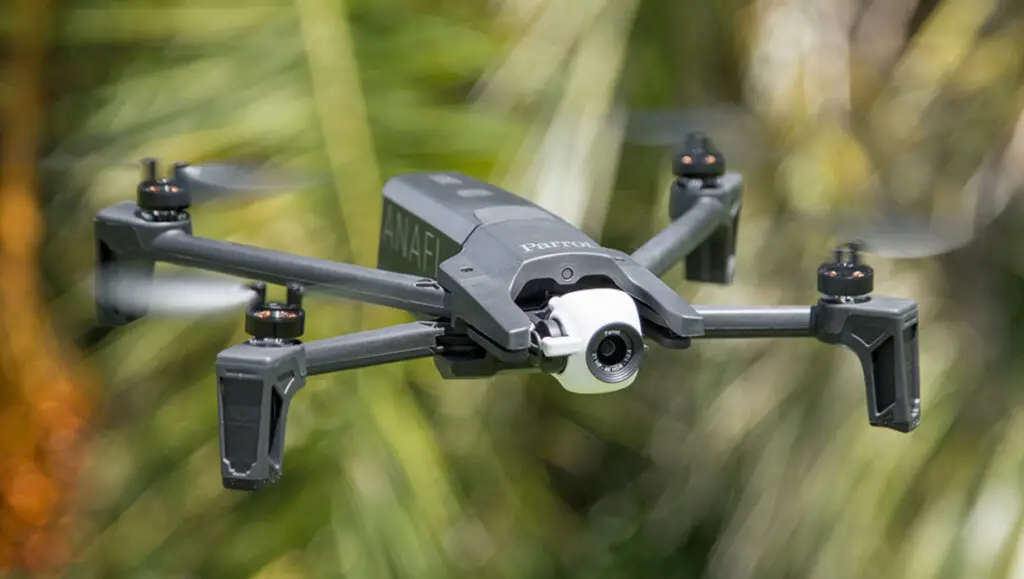
Why it’s one of the best drones for roof inspections:
A mid-priced drone that competes with the DJI Mavic Air, the Anafi Work from Parrot Drones almost seems like it was designed with roof inspections in mind. It comes able to fly in automatic, programmable flight patterns and ready to produce 3D models of buildings.
Another thing to note about Parrot Drones is that they are a European company, and they take pride in the fact that they protect your information when you’re using their drones.
Quote from the Parrot Drones website: “The drones’ flight logs (eg. flight location and flight date) are part of the sensitive data collected by the drones. Parrot’s privacy features and policies are fully compliant with the EU’s General Data Protection Regulation (GDPR).”
Another interesting piece of information: Parrot claims to have zero no fly zone limitations. That is, they won’t remotely disable your drone in drone-restricted areas. The Parrot Anafi is the best drone in its price range without these restrictions.
- Camera: 21 megapixel images. 4K HDR with lossless zoom of 1.4x in 4K and 2.8x in full HD (1080p). 3-axis gimbal.
- Flight Control: Comes with integrated GPS and automatic return-to-home function. Designed to resist winds up to 50 km/h. This drone has no obstacle avoidance sensors, so automated flights must be programmed carefully, and manual operation requires extra care. The excellent camera zoom means this isn’t as much of a drawback as it sounds, as you don’t need to get as close to the surface of the roof.
- Flight Time: Up to 25 minutes, but comes with 4 batteries.
- Roof Inspection Software: This drone comes equipped with excellent roof inspection software applications. Third-party software applications are available, but limited.
- Thermal Camera: A thermal camera option is not available for this drone, but see the next drone on the list.
- Weight: 320g
See the Parrot Anafi Work on Amazon
Parrot Anafi Thermal Drone • Best Affordable Thermal Drone
Price Range: $2,000+
Check Parrot Anafi Thermal price on Amazon
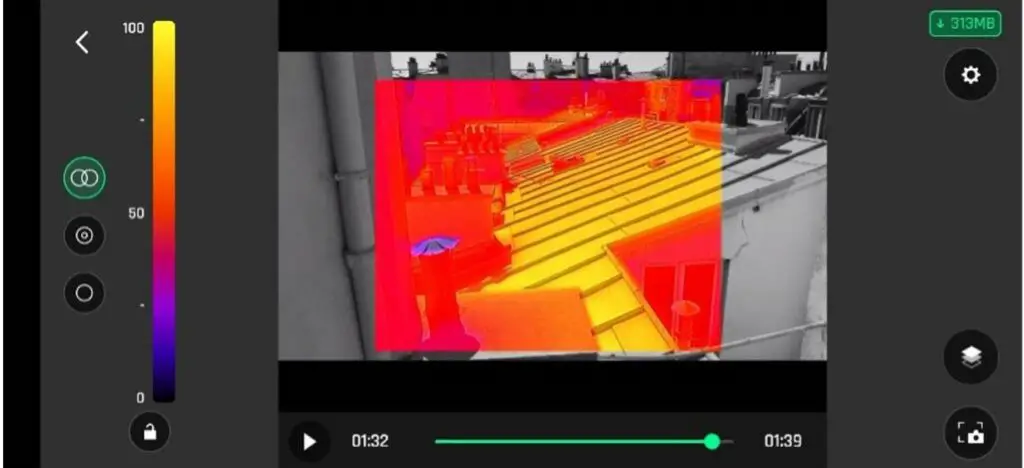
Why it’s one of the best drones for roof inspections:
The Parrot Anafi Thermal is one of the most affordable professional thermal imaging drones. It comes ready to perform thermal surveys and generate thermal inspection reports.
A high-quality drone for the (relatively) low price. It’s not the overall best drone for thermal inspections, but you can’t beat the price. Seriously.
If you intend to make thermal imaging roof inspections the main focus of your business, or if you’re already performing professional thermal roof inspections on foot and you’d like to switch to using a drone, you should check out the DJI Mavic 2 Enterprise Advanced.
This top-of-the-line drone comes ready to perform pre-programmed, automated inspection flights for thermal mapping of large commercial roofs.
- Camera: This drone comes with 2 cameras, a FLIR Lepton® 3.5 radiometric thermal-imaging camera and a 4K HDR camera with lossless zoom x2.8 (x3 in standard mode) and a 21 megapixel Sony sensor specifically designed for visual inspection.
- Flight Control: Comes with integrated GPS and automatic return-to-home function. Designed to resist winds up to 31 mph. This drone has no obstacle avoidance sensors, so automated flights must be programmed carefully, and manual operation requires extra care.
- Flight Time: Up to 26 minutes, but comes with 3 batteries.
- Roof Inspection Software: This drone comes equipped with inspection software perfectly suited for thermal roof scans. Third-party software applications are available, but limited.
- Thermal Camera: Yes, of course.
- Weight: 496 g
See the Parrot Anafi Thermal on Amazon
DJI Mini 2 • Best Lightweight Drone for Roof Inspections
Price Range: $500+
Check DJI Mavic Mini 2 price on Amazon
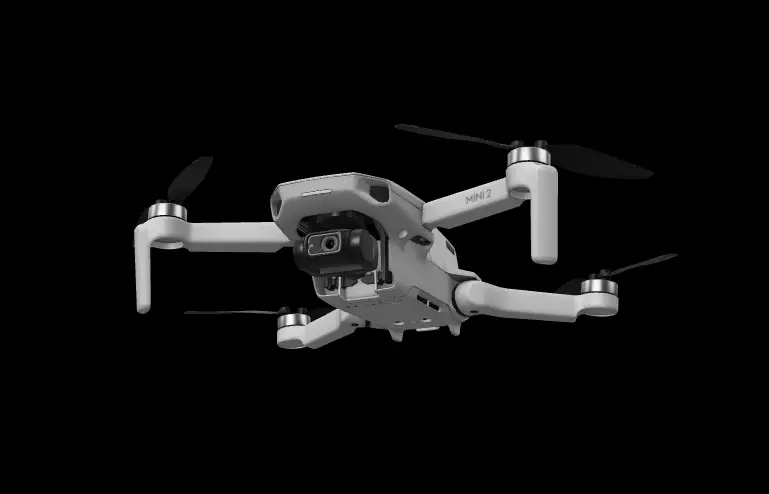
Why it’s one of the best drones for roof inspections:
Released in November 2020. The DJI Mini 2 is a lower-cost lightweight drone that’s perfect for checking for storm damage or performing more thorough visual inspections on residential roofs. It’s also a great tool for property managers to keep around so they can check on their roofs whenever they need to.
Its probably the best drone in its price range if that’s what you’ll be using it for.
Small, lightweight, and super-portable. The DJI Mini 2 was the top recommendation of the roof estimating software company iRoofing for their customers who need a new drone to use with their software.
- Camera: 12 megapixel images. 1/2.3” CMOS, 35 mm format equivalent: 24 mm. 3-axis gimbal.
- Flight Control: Comes with integrated GPS, downward obstacle sensing, and automatic return-to-home function. You’ll probably be flying this manually rather than using the limited flight path program.
- Flight Time: Up to 31 minutes.
- Roof Inspection Software: Report software is available, but more like what you would use to generate reports from the pictures from a regular digital camera.
- Thermal Camera: A thermal camera option is not available for this drone.
- Weight: 242 g
See the DJI Mavic Mini 2 on Amazon
Update: DJI Mini 4 Pro • Best Lightweight Drone for Roof Inspections
Price Range: $750+
Check DJI Mini 4 Pro price on Amazon
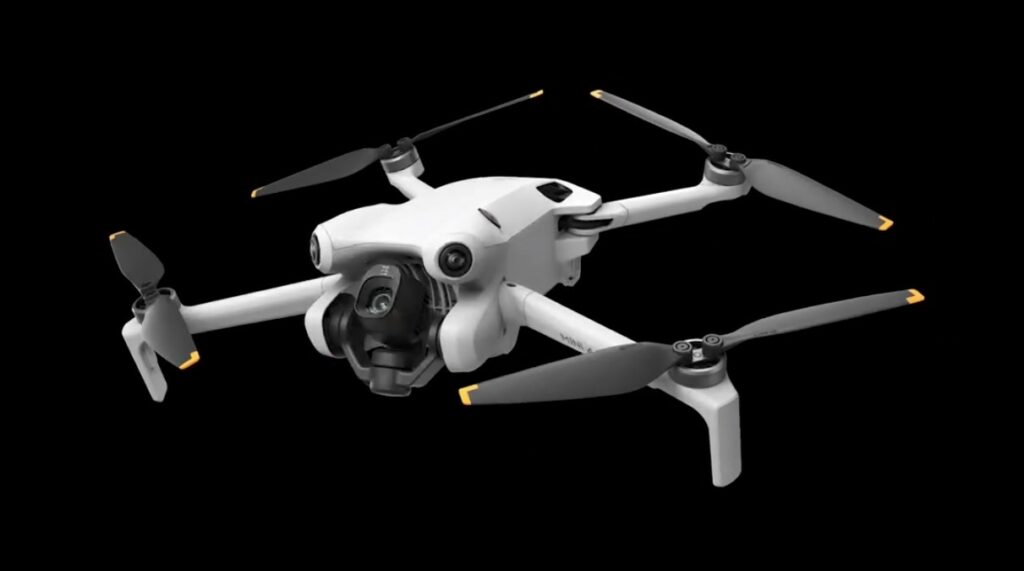
Released in September 2023. The DJI Mini 4 Pro replaces the Mini 3 Pro as the most current drone model in DJI’s “drones that weigh less than 250 grams” category.
The Mini 4 Pro has significant improvements over its predecessor, including omnidirectional obstacle avoidance to avoid crashes.
The DJI Mini 4 Pro and the DJI Mini 3 Pro are currently the best drones for roof inspections in the “under-250-grams” weight class. The Mini 3 Pro is a bit cheaper, but the Mini 4 Pro is easier to fly.
Camera: Effective Pixels: 48 megapixel images. 1/1.3 CMOS, 24 mm format equivalent. 3-axis mechanical gimbal (tilt, roll, and pan).
Flight Control: Comes with integrated GPS and automatic return-to-home function. Omnidirectional (6 directions) obstacle avoidance. Several intelligent flight modes or automatic flight paths are available.
Flight Time: Up to 45 minutes.
Roof Inspection Software: No third party roof inspection software. Of course, you can prepare inspection reports using the images from the drone just like you would with a regular digital camera.
Thermal Camera: A thermal camera option is not available for this drone.
Weight: <249 g
See the DJI Mini 4 Pro on Amazon
Contixo F35 • Best Cheap Drone for Roof Inspections
Price Range: $300
Check Contixo F35 price on Amazon
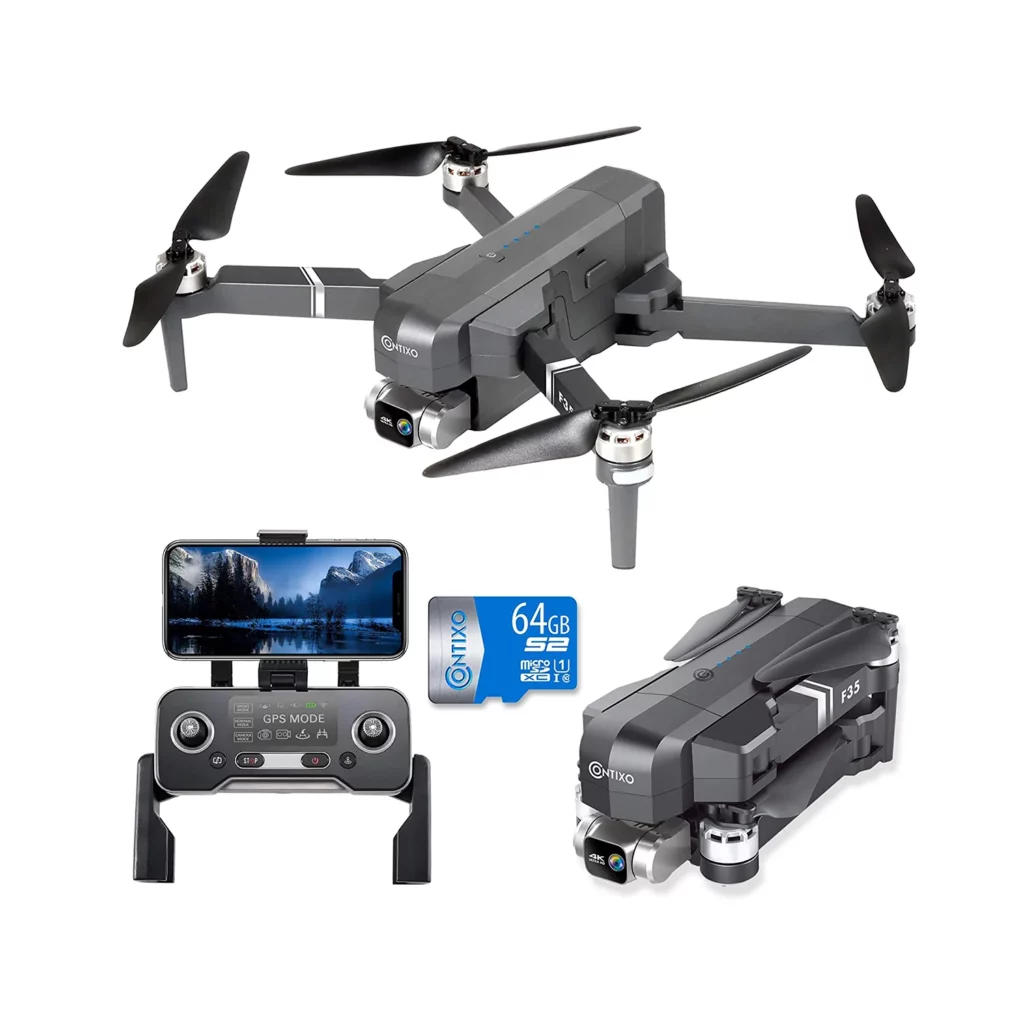
Why it’s one of the best drones for roof inspections:
Released in September 2020. A very affordable drone, the Contixo F35 is an excellent choice for anyone who wants to get the hang of using a drone without spending a lot of money right off the bat.
While we don’t recommend performing professional roof inspections with such limited drones, this is one of the best drones in its price range.
This drone is perfectly good for visual roof inspections and photographic documentation. If you just want to get pictures of a roof so you know exactly what’s up there, this will do just fine.
The Contixo F35 also takes better pictures under windy conditions than most drones in this price range, and has a sturdier build.
- Camera: 12 megapixel images. 4K UHD Camera with 2-axis gimbal.
- Flight Control: Comes with integrated GPS and automatic return-to-home function. Pre-programmed, automatic flight paths are available.
- Flight Time: Up to 30 minutes.
- Roof Inspection Software: No third party roof inspection software for this drone. Of course, you can prepare inspection reports using the images from the drone just like you would with a regular digital camera.
- Thermal Camera: A thermal camera option is not available for this drone.
- Weight: 589 g
About the Author
Jack Gray is a principal roof consultant and vice president at the Moriarty Corporation, an award-winning building enclosure consultant firm founded in 1967. He is also the editor of the Roof Online website.

Mr. Gray has worked in the roofing industry for over 25 years, with training and practical experience in roof installation, roof inspection, roof safety, roof condition assessment, construction estimating, roof design & specification, quality assurance, roof maintenance & repair, and roof asset management.
He was awarded the Registered Roof Observer (RRO) professional credential in 2009.
He also served as an infantry paratrooper in the 82nd Airborne Division and has a B.A. from Cornell University. Read full bio.
More Drone Resources
Related Articles
External Sources & References
- FAA (Federal Aviation Administration) – Drone Information – Main Page
- IIBEC Interface, the technical journal of the International Institute of Building Enclosure Consultants (IIBEC) – Drone Surveying: 3-D Enabled Automation of Roofing and Building Envelope Structures, October 2015
- InterNACHI ( International Association of Certified Home Inspectors) – IR Cameras: Inspecting Roofs
- Roofing Contractor Magazine – 5 Reasons Why You Should Start Using Drones to Inspect Roofs, January 13, 2022
- Roofing Contractor Magazine – Advances in Thermal Imaging Drone Technology Greatly Improve Commercial Flat Roof Inspection Efficiency, May 13, 2022
- Roofing Magazine – NRCA Believes FAA Rules on Drones Will Benefit the Roofing Industry, July 27, 2016